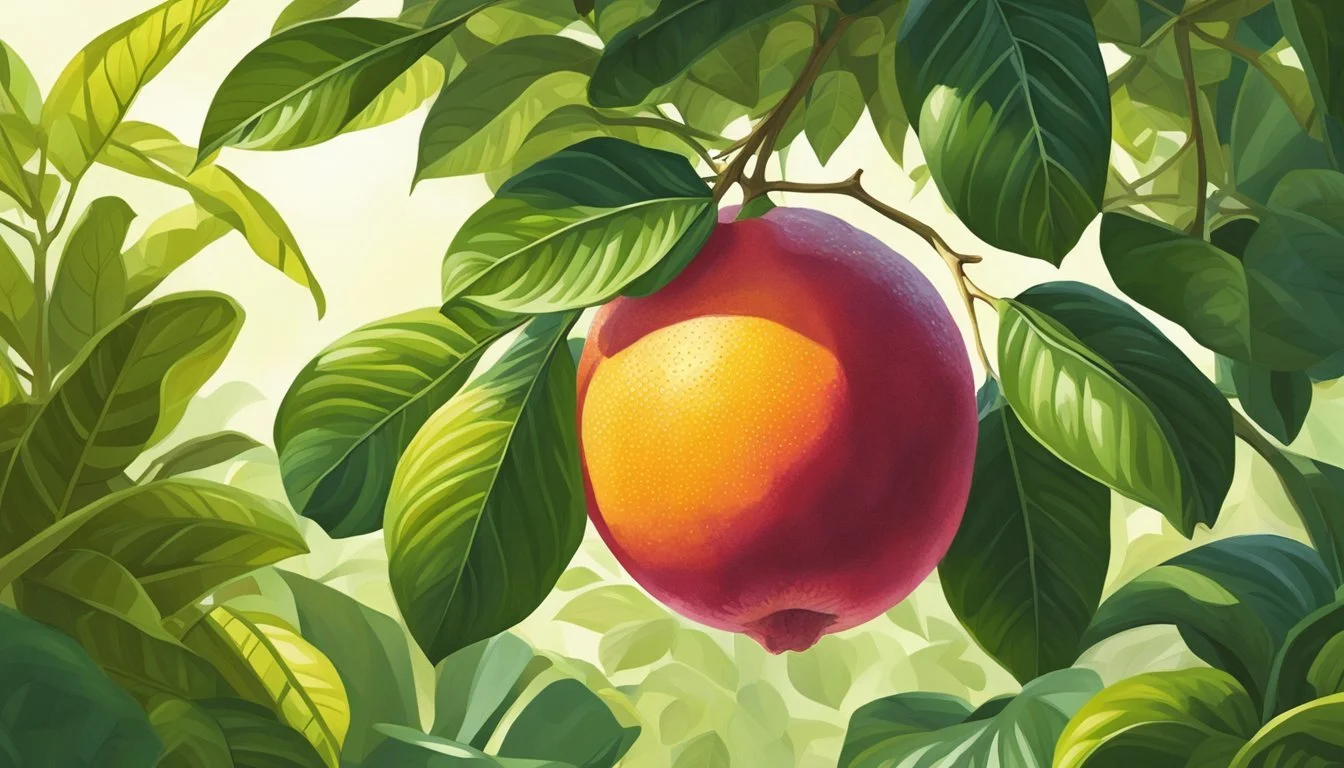How to Tell if a Ruby Red Grapefruit is Ripe
Expert Tips for Perfect Selection
Deciding the perfect time to enjoy a Ruby Red grapefruit involves a few key indicators that can easily be assessed without the need for specialized tools. Mature Ruby Red grapefruits boast a vibrant yellow or orange color, and when ripe, should feel heavy for their size, indicating a juicy interior. As the fruit reaches maturity, its skin smoothes out and the overall texture becomes firm yet gives slightly under pressure, signaling that it's ready to be savored for its sweet and tart flavors.
Properly selecting and storing Ruby Red grapefruits ensures that their unique nutritional benefits, including high vitamin C content and antioxidants, are preserved. When shopping, look for those that are plump with smooth skin and store them at room temperature or in the refrigerator to extend their freshness. Understanding the natural ripening process, optimal growing conditions, and identifying the perfect ripeness of Ruby Red grapefruits are critical points for anyone looking to include this citrus fruit in their diet or culinary practices.
Key Takeaways
A ripe Ruby Red grapefruit feels heavy for its size and has smooth, firm skin.
Storing grapefruits correctly extends their shelf life and preserves their nutritional value.
Selecting the best grapefruits involves assessing weight, texture, and color.
Understanding Grapefruit Ripeness
Identifying a ripe Ruby Red grapefruit involves checking color, texture, and other sensory indicators. Ensuring ripeness maximizes flavor and juiciness.
Color Indicators
A ripe Ruby Red grapefruit exhibits a vibrant ruby-red hue without green patches. The uniformity of the red color is a strong indication of ripeness. In contrast, yellow or green tones suggest immaturity.
Texture and Firmness
The texture of a ripe grapefruit should be firm with a slight give when pressed. It should feel smooth to the touch, and the skin should not have any wrinkles, which could indicate dehydration or over-ripeness.
Weight Considerations
A heavier grapefruit typically signifies a juicier fruit. When selecting, choose one that feels heavy for its size, suggesting a high water content and, hence, ripeness.
Aroma and Fragrance
A ripe Ruby Red grapefruit will emit a sweet and fragrant aroma. If you detect a fermented or overly sour smell, it may indicate spoilage or over-ripeness.
Taste and Flavor
While you can't taste a grapefruit before buying, ripe ones should possess a balance of sweet and acidic flavor profiles. This balance is a hallmark of a properly ripened Ruby Red grapefruit.
Checking for Imperfections
Inspect the Ruby Red grapefruit for signs of rot or soft spots. Imperfections such as wrinkled skin, bruises, or discolored areas often compromise the fruit's freshness and taste.
Size and Shape
Ruby Red grapefruits are expected to be round or slightly oval in shape. Size can vary, but the shape should be symmetrical, as irregularities can suggest abnormal growth or ripening issues.
Optimal Conditions for Growth and Harvest
To ensure a successful yield of Ruby Red Grapefruits, understanding and implementing the optimal conditions for their growth and harvest times is crucial. This includes the right climate and soil, careful tree care, and appropriate harvesting techniques.
Ideal Climate and Soil
Ruby Red Grapefruit trees thrive in warm, subtropical climates with ample sunshine and mild winters. Regions such as South Texas in the United States provide a near-ideal environment. They require well-drained, slightly acidic to neutral soil (pH levels between 6.0 and 7.0) rich in organic matter. Ensuring proper soil conditions is fundamental for the trees' growth and fruit development.
Grapefruit Tree Care
Proper care of grapefruit trees involves routine practices to maintain their health:
Sunlight: They need full direct sunlight for at least 6-8 hours daily.
Watering: Consistent moisture is key, but avoid overwatering to prevent root rot.
Fertilization: Adequate nutrients support growth; a balanced citrus fertilizer is often recommended.
Pruning: Remove dead or overgrown branches to promote better light exposure and airflow.
Harvesting Techniques
Grapefruits are typically harvested once they reach their full color and size, which indicates ripeness. They should be tree-ripened, as the fruit does not continue to ripen after being picked. The best time to pick grapefruit is often during the ripening season that begins in early spring and can vary based on climate:
Season: The harvest season usually starts in late autumn and can last until early spring.
Technique: Use clean, sharp clippers or a fruit-picking basket to avoid damaging the fruit and the tree.
Selecting and Storing Grapefruits
A well-selected and properly stored grapefruit ensures maximum flavor and shelf life. This guide focuses on selecting the best Ruby Red grapefruit and the appropriate storing techniques, along with identifying the signs of overripe and underripe fruits.
Choosing the Best Grapefruit
When selecting a Ruby Red grapefruit, one should look for fruits that are firm to the touch with a slight give. A ripe grapefruit is often plump and feels heavy for its size, indicative of a juicy interior. The skin should have a deep red blush, characteristic of the Ruby Red variety, and lack any green tinges. Additionally, a ripe fruit emits a sweet, citrusy aroma.
Color: Deep red blush, no green hues
Feel: Firm with a slight give
Weight: Heavy for its size
Smell: Sweet, citrusy aroma
Storing Techniques
To extend the shelf life of a grapefruit, it should be stored in a cool, dry place away from direct sunlight if it is not yet ripe. Once ripe, it can be kept either at room temperature or refrigerated to maintain freshness. When storing in the refrigerator, place the grapefruit in the crisper drawer to retain its moisture. The ideal storage temperature is between 50-55°F (10-13°C).
Unripe: Cool, dry place
Ripe: Refrigerated in crisper drawer
Temperature: 50-55°F (10-13°C)
Signs of Overripe and Underripe Fruits
To avoid selecting an underripe or overripe grapefruit, one should be aware of the signs. An underripe grapefruit has a firm texture and may feel lighter in weight, with a dull coloration and lacks aroma. Contrastingly, an overripe grapefruit has overly soft spots and may have a fermented smell. The skin may appear wrinkled or have brown spots.
Underripe:
Firm and light
Dull color
Lacking aroma
Overripe:
Overly soft spots
Fermented smell
Wrinkled or blemished skin
Nutritional Value and Health Benefits
Ruby Red grapefruits pack a substantial nutritious punch with essential vitamins, antioxidants, and fiber that contribute to various health benefits. They support the immune system, aid in weight management, and offer an array of nutrients that are vital for overall health.
Vitamins and Antioxidants
Ruby Red grapefruits are a rich source of vitamin C, an antioxidant that is crucial for maintaining a healthy immune system and repairing body tissues. A half grapefruit can provide more than half of the daily recommended intake of this vitamin. Additionally, they contain vitamin A, which is important for vision and skin health. Here are the specifics:
Vitamin C: Essential for the immune system and skin health
Vitamin A: Supports vision, the immune system, and skin health
Antioxidants: Protect cells from damage by free radicals
These nutrients help protect against chronic diseases and promote overall health by combating oxidative stress in the body.
Dietary Fiber and Weight Loss
With ample dietary fiber in each serving, Ruby Red grapefruits aid in weight management and digestive health. Fiber provides a feeling of fullness, which can help control appetite and reduce overall calorie intake, essential for weight loss. A single half of a Ruby Red grapefruit contains around 2 grams of fiber. The fiber content encompasses both soluble and insoluble fiber, which support gut health and can help lower cholesterol levels. Here's how fiber contributes to health and weight loss:
Weight Management: Fiber provides satiety, helping to control cravings and overeating
Digestive Health: Helps maintain bowel regularity and can prevent constipation
Grapefruit Varieties
Grapefruit varieties vary widely in terms of color, taste, and characteristics. Knowing the differences is key to selecting the right type for your palate or recipes.
Popular Varieties and Their Characteristics
Ruby Red Grapefruit: They are known for their vibrant red flesh and are appreciated for their balance of sweetness and tartness. A mature Ruby Red grapefruit tree can grow to at least 20 feet tall and spread 10 feet wide.
Rio Red Grapefruit: An improvement on the Ruby Red, with a deeper red color and a particularly sweet flavor. They were developed in Texas and quickly gained popularity.
Star Ruby Grapefruit: Features deep red flesh, is seedless, and has a sweetness that makes it preferable for those who enjoy a less acidic taste.
Flame Grapefruit: This variety is less common, with rich pink flesh, noted for a juicy flavor that combines sweetness with a light tart kick.
Grapefruits generally come in three main colors: white, pink, and red, with the color intensity often correlating with sweetness; the redder the fruit, the sweeter it tends to be.
Comparing Grapefruit to Other Citrus
Acidity
Grapefruit: High acidity
Orange: Lower than grapefruit
Lemon: Very high acidity
Mandarin: Lower than grapefruit
Sweetness
Grapefruit: Varies by variety
Orange: Generally sweet
Lemon: Not sweet
Mandarin: Sweet, less acidic
Peel Color
Grapefruit: Yellow to reddish-pink
Orange: Orange
Lemon: Yellow
Mandarin: Orange to red-orange
Flesh Color
Grapefruit: White, pink, or red
Orange: Orange
Lemon: Pale yellow
Mandarin: Orange
Common Uses
Grapefruit: Juicing, salads
Orange: Snacking, juicing
Lemon: Flavoring, juice
Mandarin: Snacking, salads
Grapefruits stand out from other citrus fruits like oranges, lemons, and mandarins due to their size, bolder taste, and higher level of acidity. They are larger and not as sweet as most sweet oranges, and they have a thicker peel than mandarins. While lemons are more acidic and less sweet, making them less common for direct consumption, grapefruits are often enjoyed fresh or in fruit salads despite their acidity, which is counterbalanced by their inherent sweetness, especially in red and pink varieties.
Practical Uses of Grapefruit
Grapefruit, a fresh and juicy citrus fruit, brings a burst of flavor and a plethora of applications ranging from culinary delights to self-care routines. This section explores the versatile roles ripe grapefruit can play in daily life.
In the Kitchen: Recipes and Preparation
Ripe grapefruit is a treasure trove of flavor for culinary enthusiasts. It can be sectioned and enjoyed raw for a refreshing snack or tossed into salads for a tangy twist. Grapefruit sections or juice can also be incorporated into marinades and dressings, imparting a citrusy brightness that enhances meats and vegetables.
Breakfast time is ideal for integrating grapefruit, where one can broil half a grapefruit sprinkled with a touch of sugar or honey to caramelize the top for a decadent yet healthy option. Furthermore, the juice of a grapefruit serves as an excellent base for smoothies and cocktails, or simply enjoyed on its own for a revitalizing drink.
Recipes commonly using grapefruit:
Citrus salads
Smoothies with grapefruit as a base
Grapefruit-infused cocktails, such as Palomas
Baked grapefruit for a healthy dessert
Grapefruit in Beauty and Self-Care
In the realm of beauty and self-care, ripe grapefruit's properties are equally beneficial. The fruit's juice and oil are commonly integrated into skincare products for their toning and antiseptic qualities. Grapefruit extracts in facial cleansers can help to refresh the skin and provide it with a burst of vitamin C.
Additionally, grapefruit's natural acidity makes it a fine exfoliant, which can be used in homemade scrubs to soften the skin. The citrusy scent is known to be invigorating and uplifting, often featured in aromatherapy as well as in body washes and lotions.
Self-care products featuring grapefruit:
Facial cleansers and toners with grapefruit extracts
Body scrubs utilizing grapefruit juice or zest
Lotions and perfumes with the energizing scent of grapefruit
Seasonal Purchasing Options
When it comes to purchasing Ruby Red Grapefruit, consumers should focus on the peak season, which typically spans from November through May. During these months, grapefruits achieve their best flavor, offering a perfect blend of tang and sweetness.
Craft Citrus Club and similar providers curate seasonal citrus boxes that include fresh-harvested citrus, ensuring customers receive the highest quality of produce directly sourced from the groves. Florida and South Texas are prime regions within the United States known for producing flavorful Ruby Red Grapefruits.
Those interested in a regular supply can consider subscription options such as the Rio Box or the Grande Box, which often include a variety of fresh citrus alongside Ruby Reds. The convenience of these boxes is unparalleled, as they offer a selection of the season's best directly to one's door.
Subscription Box: Rio Box
Contents: Seasonal Citrus Mix
Availability: Nov-May
Subscription Box: Grande Box
Contents: Premium Larger Citrus Mix
Availability: Nov-May
Patrons are encouraged to verify the source of their grapefruits to ensure they are receiving United States-grown produce, which supports local farmers and guarantees a product cultivated in ideal conditions for optimal ripeness and taste.
Frequently Asked Questions
In this section, readers discover the nuances of purchasing ripe Ruby Red Grapefruits, understanding their seed content, and being aware of their interaction with certain medications. These targeted insights provide essential information for anyone looking to enjoy this citrus fruit at its best.
Ideal Time to Buy and Consume
Ruby Red Grapefruits are typically in season from November through May. Consumers should aim to purchase these fruits when they exhibit a bright red hue with smooth, firm skin and feel heavy for their size — a sign of juiciness. Once at home, ripe grapefruits can be stored at room temperature for a week or in the refrigerator for two to three weeks.
Dealing with Seeds in Grapefruit
While Ruby Red Grapefruits are known for being less seedy, some fruits may contain seeds. Consumers can easily remove these seeds by cutting the fruit in half and scooping them out with a spoon or pushing them aside when eating the segments.
Impact of Grapefruit on Pharmaceuticals
Grapefruits contain compounds that can alter the metabolism of certain medications. Those taking prescription drugs should consult with their healthcare provider about potential interactions before consuming grapefruits. It is critical to follow professional advice to avoid undesirable effects on medication efficacy or safety.




